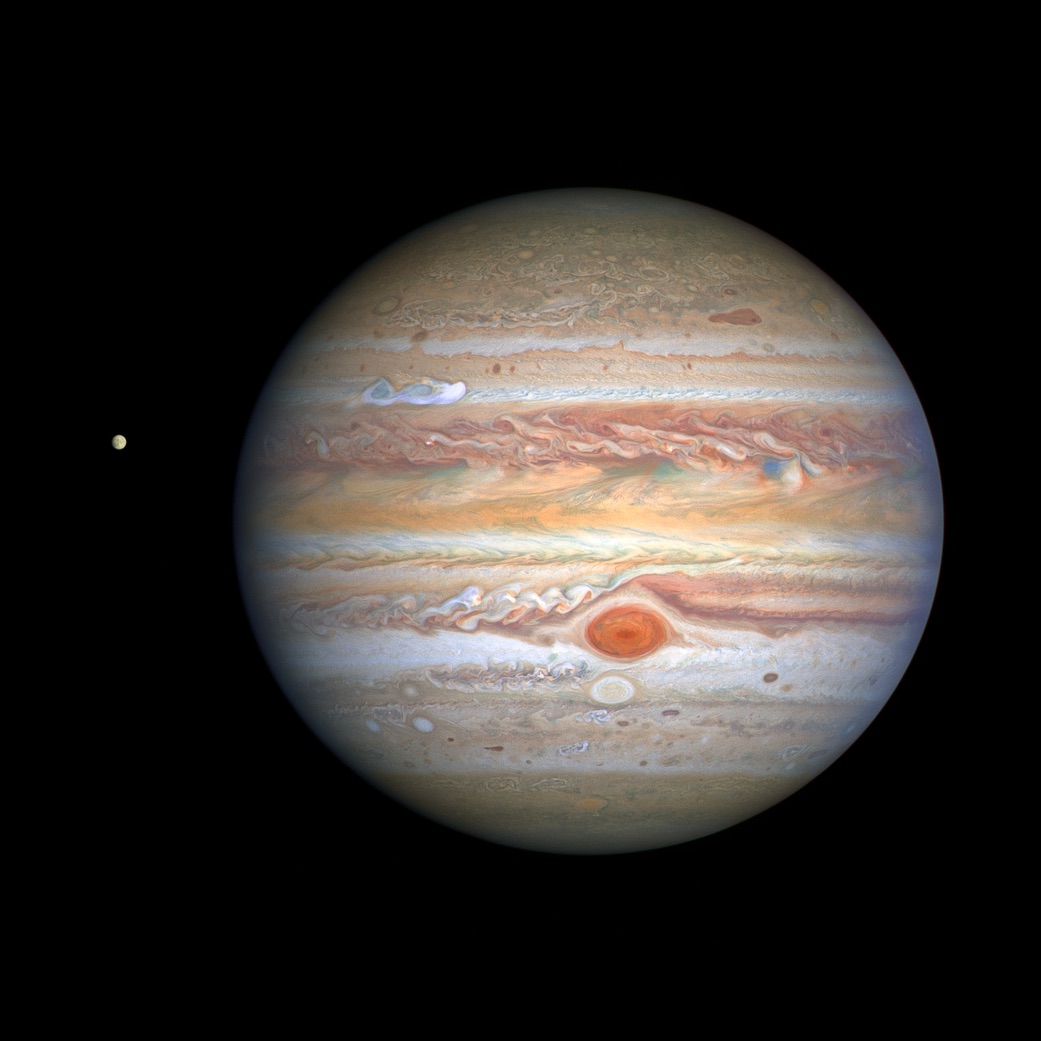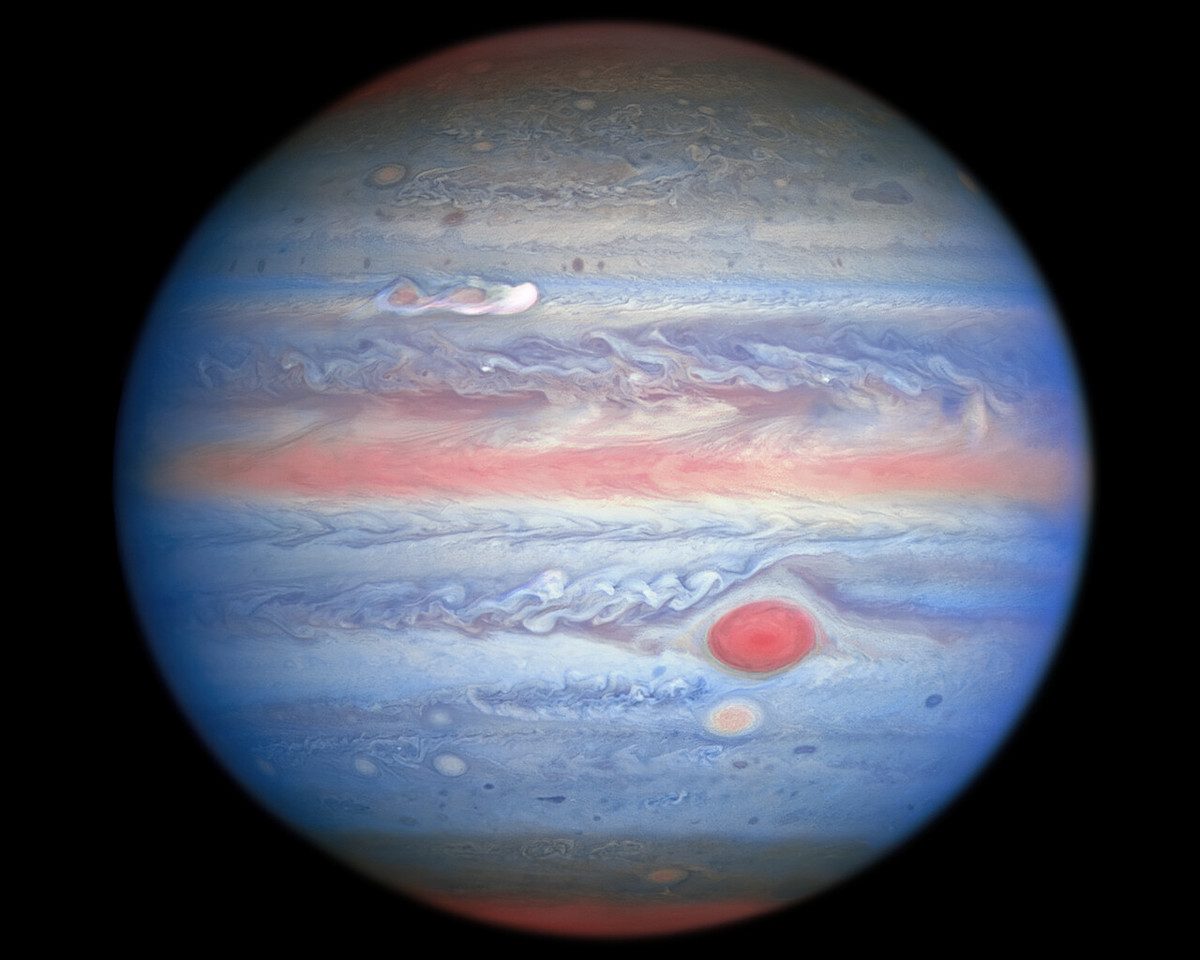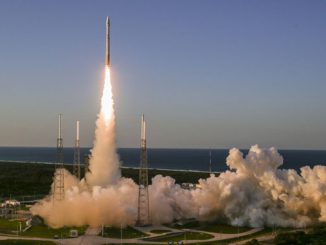
The Hubble Space Telescope turned toward Jupiter last month, capturing colorful views of the giant planet and its icy moon Europa more than 400 million miles from Earth.
The images reveal a new storm brewing on Jupiter, giving scientists an enticing snapshot of the gas giant’s ever-changing weather. Racing around the planet at 350 miles per hour (560 kilometers) per hour, the fresh storm is located on the upper left part of Jupiter in the Hubble views.
The storm appeared Aug. 18, a week before Hubble’s look at Jupiter. Two more storms appeared later at the same latitude.
Jupiter was positioned 406 million miles (653 million kilometers) from Earth when the Hubble Space Telescope observed the planet. Hubble, a joint project between NASA and the European Space Agency, takes pictures of the solar system’s outer planets every year to look for changes in their storms, winds, and clouds, according to NASA.
The timing of Hubble’s Aug. 25 observations was perfect to study Jupiter’s newest storm system. NASA said storms commonly form in the same latitude band on Jupiter every six years or so.

“Trailing behind the plume are small, rounded features with complex “red, white, and blue” colors in Hubble’s ultraviolet, visible, and near-infrared light image,” NASA said in a release accompanying the images. “Such discrete features typically dissipate on Jupiter, leaving behind only changes in cloud colors and wind speeds, but a similar storm on Saturn led to a long-lasting vortex.
“The differences in the aftermaths of Jupiter and Saturn storms may be related to the contrasting water abundances in their atmospheres, since water vapor may govern the massive amount of stored-up energy that can be released by these storm eruptions,” NASA said.
Jupiter’s famous Great Red Spot is also clearly visible in Hubble’s newest images. The cyclone spans 9,800 miles (15,800 kilometers) across, big enough to fit Earth inside, but has been steadily shrinking in telescopic observations dating back to 1930, NASA said.
Scientists don’t know why the Great Red Spot is shrinking.
A companion storm just south of the Great Red Spot is also exhibiting some changes in Hubble’s latest observations. The smaller cyclone, named Oval BA or Red Spot Jr., appeared red when it appeared on Jupiter in 2006. But its color later faded to white.
The Oval BA feature now appears to be darkening, according to NASA.
“This could hint that Red Spot Jr. is on its way to turning to a color more similar to its cousin once again,” NASA said.
“Hubble’s image shows that Jupiter is clearing out its higher altitude white clouds, especially along the planet’s equator, where an orangish hydrocarbon smog wraps around it,” NASA said.
Europa, one of Jupiter’s four largest moons, appears to the left of the planet in Hubble’s observation from Aug. 25. Europa’s global ice shell covers a buried ocean that may harbor the ingredients for life.
NASA’s Juno mission is currently orbiting Jupiter, studying the gas giant’s atmosphere and internal structure.
Two more robotic missions Jupiter are currently in development. NASA’s Europa Clipper mission is scheduled for launch in 2024 to perform repeated close-up flybys of Europa, while ESA’s JUICE spacecraft is being readied for launch in 2022 to head for Jupiter and eventually enter orbit around Ganymede, the largest moon in the solar system.
Email the author.
Follow Stephen Clark on Twitter: @StephenClark1.



